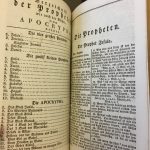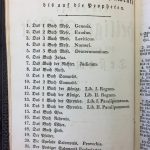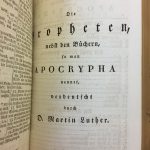Title: Die Bibel, oder die ganze Heilig Schrift des alten und neuen Teftaments, nach der deutfchen Ueberfebung (The Bible, or the whole Holy Scriptures of the Old and New Testaments, after the German translation of Martin Luther)
Date: 1824
Location: Leipzig, Germany
Publisher: Wilhelm Umbrosius Barth
Size: 4½ x 7½ x 2½ inches
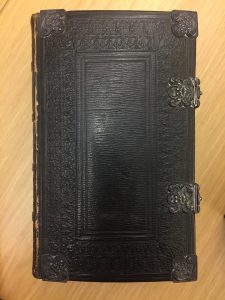
Front cover
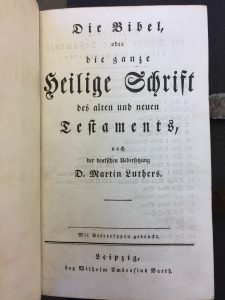
Title page
Die Bibel is a Protestant bible printed in Germany in 1824. It’s small, around 4.5 x 7.5 x 2.5 inches, indicating that it was made for personal use. It is decorated with metal clasps and designs on the covers. On the inside of the clasps, one has “1824” engraved and the other has the initials “M.B.” who could be the owner or commissioner of the bible. The pages of the bible do not bear the darkness from the oils on fingertips from years of use. This, along with the decorative exterior, indicates that this bible was more for show or special occasions rather than everyday use. There is one handwritten note in the bible and it is on a page in the New Testament. It’s the date “25 Oct. 1835.”
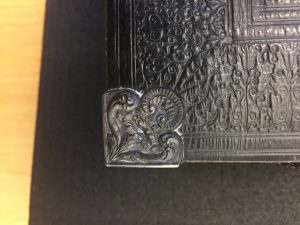
Detail of metal
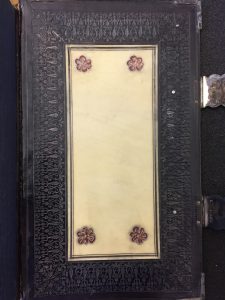
Back inside cover

Note

Clasp
The edge of the bible contains fore-edge paintings, which are small paintings that are hidden until the book is open. They can depict a range of things, such as places, people, and natural elements. The fore-edge paintings on this bible depict different types of flowers or plants.
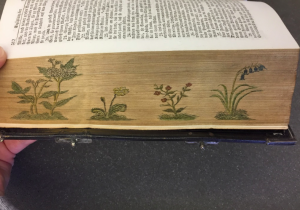
Fore-edge paintings
This German translation was first made by Martin Luther in 1534 when he translated the Old Testament from the original Hebrew and the New Testament from the original Greek texts. Luther was a reformer who had many qualms with the Catholic Church, publishing 95 theses in 1517 outlining the issues he had with the Church. One was that the Latin Vulgate was the only translation authorized for use, despite the fact that few people knew Latin by the 16th century. The Vulgate was St. Jerome’s translation of the Old and New Testaments from the original Hebrew and Greek in the late 4th and early 5th century, making it around 1000 years old by Luther’s time. Luther created his own translation, choosing to go back to the original Hebrew and Greek rather than translating directly from the Vulgate because he believed that since it was so old, it was outdated and unreliable as a source to translate from. He argued that his translation was much more accurate. It undermined the Catholic Church and made the bible more accessible. As a result, the bible was translated into many other languages during the Protestant Reformation. This bible is therefore a Protestant bible.
- Table of contents
- Apocrypha
